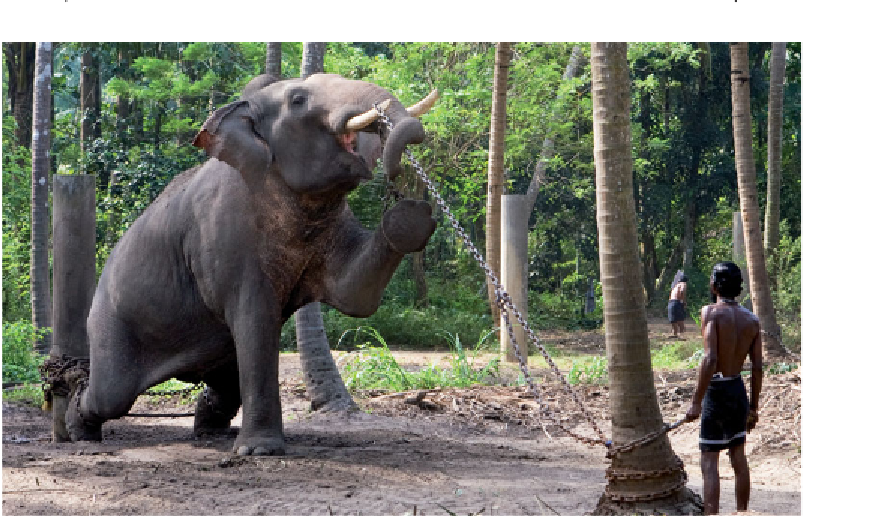Travel Reference
In-Depth Information
Figure 99
This domesticated elephant, at an “elephant temple” near Cochin on India's
southwest coast, is going through a period of musth and has to be restrained. Such unpredict-
able behavior has made it diffi cult to complete the domestication of Indian elephants.
Humans have hunted elephants in sub-Saharan Africa for a long time,
though they did not drive them to extinction. Elephants in more temperate lati-
tudes were more vulnerable, however. Todd Surovell of the University of Wyo-
ming and his colleagues have used the distribution of hunting and butchering
sites to show that, as humans spread north into Eurasia and fi nally into North
sites formed a thin line that moved north over time, showing that humans killed
as they went, wiping out the elephants quickly and with unnerving ei ciency.
Ten thousand years ago, not long after humans arrived in North America, four
genera of elephants and mastodons that had been thriving there disappeared.
In contrast to the slaughter in more temperate latitudes, humans and
elephants coexisted in Africa. Why were the elephants not tamed? Are sub-
Saharan elephants really too savage, or did it simply not occur to anybody
to try? There is no doubt that domestication of African elephants requires a
great deal of patience, but it seems that it is not impossible.


